We were promised all this by the Northern Powerhouse. Ten years on, what did we get?
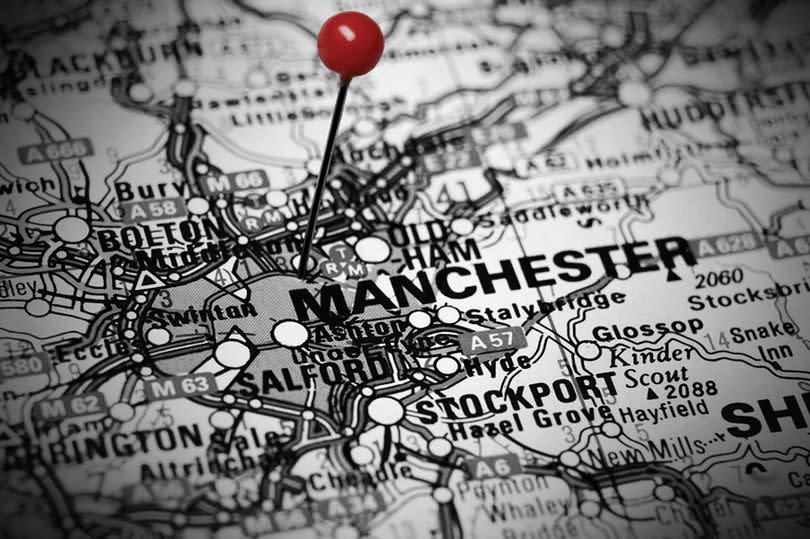
Amid relics of Manchester's industrial past, 10 years ago, a new era for the North of England was ushered in. The Northern Powerhouse speech at the Museum of Science and Industry set out a vision of an interconnected region that, together, could 'take on the world'.
The idea was that, by joining forces as a 'collection' of cities spanning from Liverpool to Hull, the North could compete with other major conurbations on the global stage. "Together," George Osborne said, "our northern cities can be more than the sum of their parts."
The then-Chancellor and 'local MP' for Tatton promised a 'radical transport plan' for the North, new regional mayors and investment in science, innovation and culture. He described the 'vital' HS2 line that was supposed to boost rail links to London as 'the most important investment in the North for a century' - and called for the construction of a third high-speed railway line linking Manchester to Leeds.
HAVE YOUR SAY: The Greater Manchester General Election 2024 Survey
Later that year, Prime Minister David Cameron brought Chinese President Xi Jinping to Manchester and declared that the Northern Powerhouse project now had the backing of China. Mr Osborne promised billions of pounds would be coming into northern England.
The next few months saw a flurry of investment flowing into Manchester - including £78m for The Factory arts centre, which opened as Aviva Studios last year - and a quarter of a billion pounds for the University of Manchester's Henry Royce Institute of advanced materials. The following year, work on the Ordsall Chord - a new train line linking Manchester's city centre stations - got under way.
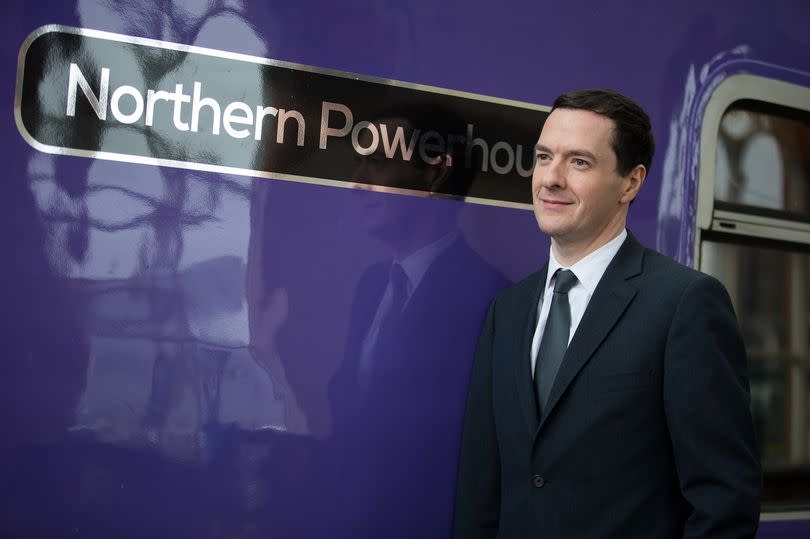
But by the time the train line opened in 2017, things had changed. A political victim of Brexit, Mr Osborne was no longer pulling the purse strings.
Under Theresa May's regime, the now-cancelled plans for two new platforms at Piccadilly - aimed at easing rail congestion across the region - simply gathered dust. And, during Boris Johnson's premiership, plans for the new east-west high-speed line were scaled back.
Rishi Sunak revived some of the Northern Powerhouse Rail scheme last year. But only after he cancelled the Northern leg of HS2, promising to spend the £36bn saved by scrapping the increasingly expensive scheme on other transport project across the country.
Days after becoming Prime Minister, Mr Johnson repeated much of the Northern Powerhouse mantra at the same museum in Manchester where it all began. But, according to Mr Osborne, the 'levelling up' agenda Mr Johnson pursued was missing something.
"It did not have any economic theory behind it," he told an audience in Manchester in May. "It was basically, 'my God, we've gone and won a load of towns in the North East of England, what should we do? I know, we'll give some money to startups, a shopping centre and put some flowers in the local roundabouts and things like that' - which, by the way, all governments have done for decades.
"The Northern Powerhouse was different because there was a real economic theory behind it. That's why it endures and it's still the only answer I've seen to what you can do to try and close the gap between the London South East economy and the rest of the country."
In 2022, Mr Johnson's government set out how it planned to 'level up' the UK beyond investing in various projects across the country. The Levelling Up White Paper listed 12 missions, including improvements in pay, health and education, setting a target date of 2030.
But last year, the Manchester Evening News found that, by many of the government's own measures, the North is going in the wrong direction. Last month, Lord Cameron, who is now serving in Mr Sunak's government as foreign secretary, defended the levelling up agenda, telling the M.E.N that the funding that has been handed out towns and cities across the region has made a 'real difference'.

Mr Osborne, his former next-door neighbour in Downing Street, does not seem to agree. However, one point that the pair do agree on - alongside Northern politicians, business leaders and university bosses - is that the vision of the Northern Powerhouse endures.
Although the ambitious project has lost momentum at a national level, some say the vision behind it is still 'burning brightly'. As the Northern Powerhouse turns 10, the Manchester Evening News looks back at what was promised, what was delivered and its legacy.
'A radical transport plan'
In February 2014, a few months before Mr Osborne made his Northern Powerhouse speech, the Conservative chancellor visited Manchester Airport, where a new platform was being built as part of the £600m Northern Hub programme. Mr Osborne called for better rail services, more seats at peak times and signalled the end of 'outdated' pacer trains which were finally retired in 2020.
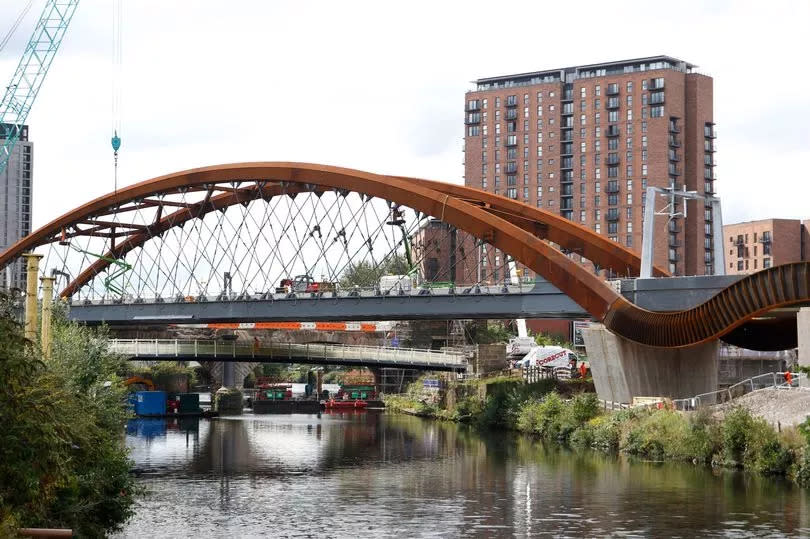
The Ordsall Chord, which linked Manchester's Piccadilly and Victoria stations, was key to all of this. The £85m link was supposed to allow more trains that pass through Manchester city centre to travel across the region by unblocking the busy Castlefield corridor.
But without more platforms at stations, the extra trains planned for the Ordsall Chord could not be accommodated. In 2015, following a public inquiry, the plans for two new platforms at Piccadilly and upgrades at Oxford Road, were ready and waiting to be signed off.
As these plans gathered dust on government desks, the Ordsall Chord was rendered obsolete - in fact, it was making things worse. Rail chaos climaxed in 2018 when a new timetable triggered endless train cancellations and delays, forcing a reduction in services.
Last May, after eight years, the plans for platforms 15 and 16 at Piccadilly were quietly cancelled after costing the taxpayer £23m. By 2021, rail bosses put forward plans to run just one train an hour on the Ordsall Chord. Four years on, it is yet to fulfil its potential.
To make matters worse, Mr Johnson's government revealed in 2021 that Northern Powerhouse Rail would be scaled back. Instead of a new 40-mile high-speed line from Manchester to Leeds, a new line would only be built from Warrington to Marsden in Yorkshire.
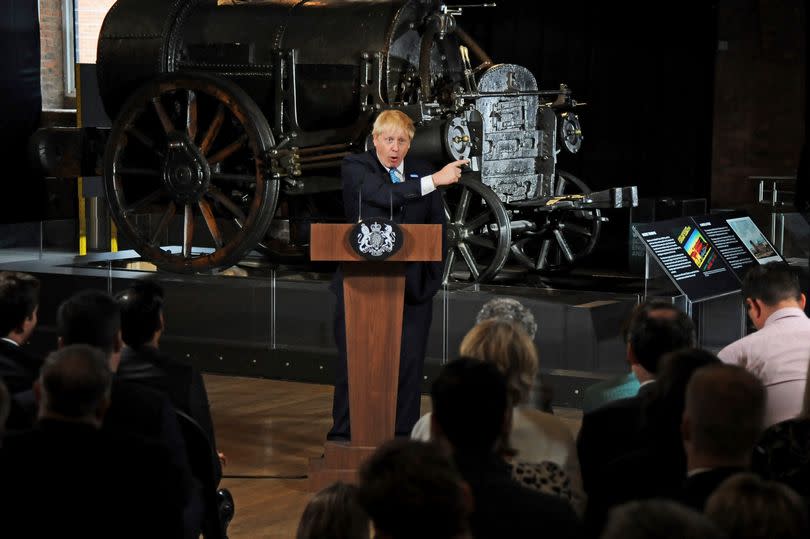
From there, it would be tacked onto an upgraded Transpennine route. Plans for a new underground station at Bradford were canned.
Then, in October 2023, the Northern leg of HS2, described by Mr Osborne nearly a decade earlier as 'the most important investment in the North for a century', was cancelled by Rishi Sunak after costs spiralled. Instead, the Prime Minister put plans for a new £2bn station at Bradford back on the table while 'protecting' £12bn for a new Northern Powerhouse Rail line between Manchester and Liverpool.
Meanwhile, in March this year, ministers said they had not yet ruled out an underground station at Piccadilly to accommodate the new high-speed line which had previously been dismissed under the ill-fated HS2 plans. However, despite commitments from Labour and the Conservatives to build Northern Powerhouse Rail, some doubt over whether this version of the scheme will ever go ahead.
Former Manchester council leader Sir Richard Leese believes Northern Powerhouse Rail has 'effectively been scrapped' already. "The final nail was scrapping HS2," he explains. "I think it would be very difficult to have a business case for Manchester to Liverpool."
And although Mr Osborne's commitment to expand the Metrolink was met in 2020 when the Trafford Park line opened, for Sir Richard, this is a small consolation. "Improving local transport is great," he says, "but the inter-city connectivity is just as, if not more, important."
Science and innovation
A decade before Mr Osborne delivered his Northern Powerhouse speech, scientists at the University of Manchester made a groundbreaking discovery. Graphene - the world's first 2D material - earned the men who discovered it a Nobel Prize in 2010.
Mr Osborne cited Manchester's National Graphene Institute, which was completed a year after the infamous speech, when he spoke of an 'incredible opportunity' to change the landscape of British science. He called on Northern universities to 'rise to the challenge'.
Later that year, he committed a quarter of billion pounds worth of investment in the Sir Henry Royce Institute in Manchester. The national institute for advanced materials research and innovation - named after the co-founder of Rolls-Royce - opened six years later.
Mr Osborne also said science investment would increase, promising that much of this investment would be coming to the North of England. With few exceptions, investment in research and development (R&D) across the country has increased steadily since then.
But, according to the latest regional data, in 2021, around half of this money was spent in London, the South East and the East of England. In 2022, the long-awaited Levelling Up White Paper promised to boost public investment in R&D outside of the Greater South East area, spending £20bn a year across the country, a third of which would go to other regions by the end of the decade.
Several months later, the government announced a £95m boost to the University of Manchester's Royce institute which now has branches across the country. Then, in 2023, Chancellor Jeremy Hunt announced £100m for the Innovation Accelerator programme.
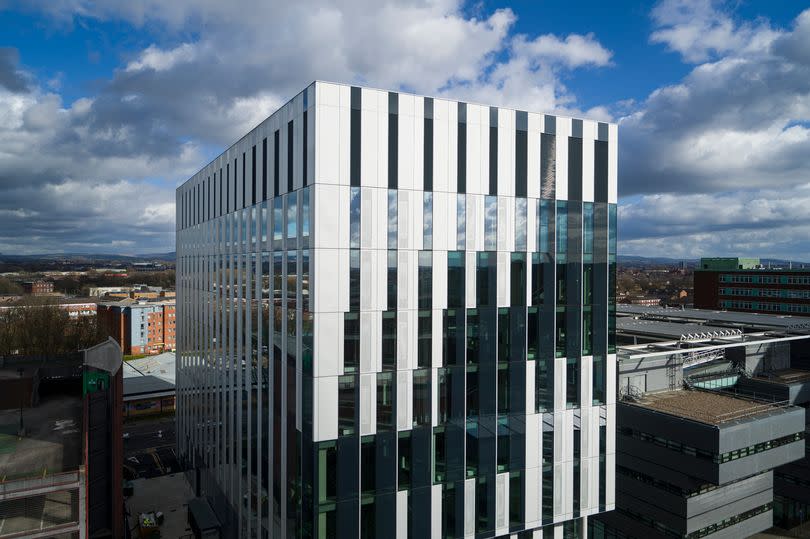
Greater Manchester has been given £33m of funding for 10 projects - including for cutting-edge artificial intelligence and net zero technologies. University leaders cite this scheme as a 'good signal', noting that R&D spending has risen 'quite significantly' recently.
But Professor Richard Jones, who is the vice-president for regional innovation at the University of Manchester, told the M.E.N. earlier this year that the government must 'double down' if it wants to meet its ambitious target of spreading R&D spending further afield.
Professor Dame Nancy Rothwell, who is the University of Manchester's President and Vice-Chancellor, says investment in science and universities has increased 'significantly' in the last 10 years, pointing to the £1.8bn Innovation District that is being built in the city. The Northern Powerhouse, she says, has brought companies, regional leaders and universities across the North together to collaborate.
For example, the N8 consortium of northern research-intensive universities has been created, while the universities of Manchester, Leeds and Sheffield have established investment body Northern Gritstone to support university spin-outs and start-ups in the region. "Collaboration across the North between regional governments, companies, universities will always have value," Dame Nancy says.
"I think it has endured," she adds when asked about the Northern Powerhouse's legacy. "But inevitably, it has adapted and evolved."
'Great places to go out'
In his 2014 speech, Mr Osborne cited Opera North in Leeds, the Tate in Liverpool and MediaCity in Salford as examples of 'world class' arts and culture already in the region. But he said he wanted to build on that, arguing that global cities are also 'great places to go out'.
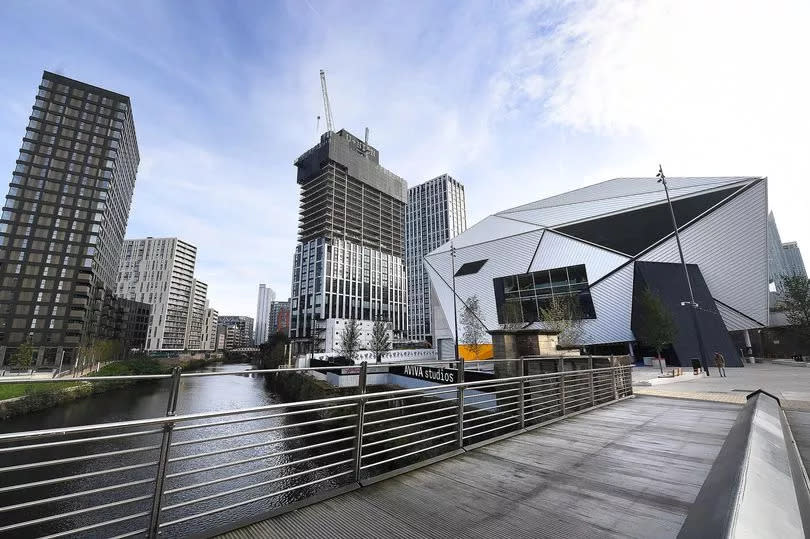
Later that year, the Chancellor committed to investing £78m in a new theatre space called 'The Factory' at the former site of Granada's TV studios in Manchester city centre. Last year, despite significant delays and an ever-ballooning budget, it opened as Aviva Studios.
Costing around a quarter of a billion pounds in the end - much of which Manchester council had to subsidise - the cavernous arts centre was the biggest cultural investment of its kind since London's Tate Modern in 2000. Its opening was closely followed by a much-anticipated announcement about another national cultural institution coming to the North - the English National Opera (ENO).
The globally-renowned company had originally campaigned against the decision by Arts Council England to slash its funding unless it moved out of the capital, saying that the move to Manchester was 'just not doable'. But, last December, the organisation struck a deal to make Greater Manchester its 'main home' by 2029, while continuing to put on a 'substantial' annual season in London's West End.
The opera company confirmed that it will not have its own venue in Greater Manchester, nor will it be based at a specific location. Instead, it will put on performances at existing venues in the city-region including The Lowry and Factory International's Aviva Studios.
While the move didn't go down well in the capital, it was warmly welcomed in Greater Manchester. Since the Northern Powerhouse speech, Manchester has seen huge sums of public funding invested in culture, including the HOME arts centre which opened in 2015.
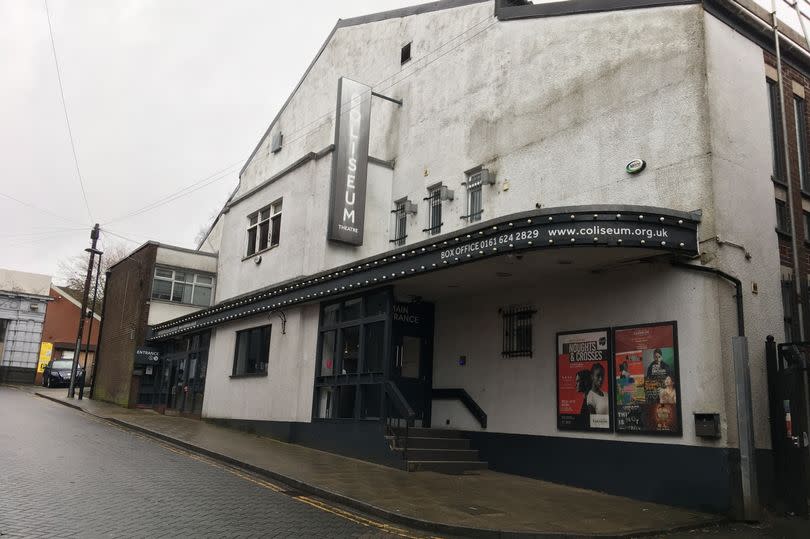
The private sector has also contributed, with the £350m Co-op Live - the largest indoor arena in Europe - opening next to the Etihad Stadium earlier this year. But while the city has seen investment in big projects, some smaller institutions in the region have suffered.
The total annual investment by the publicly-funded Arts Council England has increased more in the North than it has in London in recent years. However, last year also saw the closure of Oldham Coliseum after the 138-year-old theatre lost its Arts Council funding.
Simon Naylor, who is the artist director at Manchester-based theatre and arts charity 53two, welcomed the news of the ENO's move at the time, but questioned whether this move alone demonstrates a 'genuine effort to level up' within the industry. "Yes, having the ENO in Greater Manchester will help many theatres and bring a new, internationally recognised company to the North," he said.
"But, in a world of cuts to The Arts, particularly North of Watford, is relocating a London company to Greater Manchester just papering over the fact that our sector desperately needs a sustainable and well-funded strategy for the long term development of arts and culture across in the North?"
'Powerful city governments'
The final ingredient of the Northern Powerhouse, Mr Osborne said in 2014, is power itself. Since his speech at the Museum of Science and Industry's Power Hall, the devolution of power out of Westminster and into the hands of regional mayors has been undeniable.
The first devolution deal for Greater Manchester, which was agreed later that year, saw the city-region gain more control over transport, vast sums of cash for housing and power over policing and crime. The following year NHS funding was devolved too.
Devolution gave Greater Manchester its first elected mayor in 2017 whose power and influence has only increased since, culminating in the trailblazer deal struck last year. By next year, the funding model of the Greater Manchester Combined Authority will be similar to that of a government department, giving Andy Burnham more financial freedom, in a move being rolled out to other regions too.
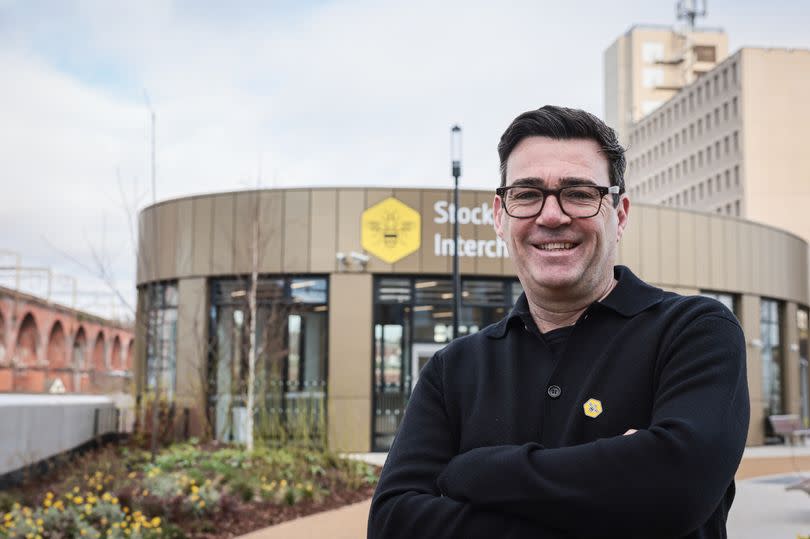
But while regional mayors have been given more financial flexibility, local councils have been squeezed. Earlier this month, the Local Government Assocation (LGA) revealed that local authorities in England now face a funding gap of £6.2bn over the next two years.
This year alone, Greater Manchester's 10 councils have had to cut nearly £100m and raise council tax by 5% just to balance the books. Meanwhile, Greater Manchester's NHS faces a deficit of £180m with national bosses stepping in to oversee the devolved organisation.
Andy Westwood, who is a professor of government practice at the University of Manchester, describes this as the 'contradiction' of devolution in recent years. "We're giving you all these powers, but we're also taking away resources through austerity," he explains.
Despite this, there have been some visible signs of devolution taking effect in Greater Manchester recently. Last year, the city-region took buses back under public control for the first time since the 1980s under a new franchising system to be fully rolled out by 2025.
The new London-style public transport system, dubbed the Bee Network, has benefited from huge sums of investment from the Conservative government. And by next year, some local rail services will be part of the new integrated public transport network too.
But it was the re-regulation of buses that convinced local leaders to agree to having a directly-elected mayor for Greater Manchester in the first place. Mr Burnham, who was re-elected for a third term as mayor last month, believes this role goes much further though.
According to the Labour mayor, by working closely together, he and the other mayors in the region are keeping the Northern Powerhouse alive. "It feels like it's more alive than ever before at a bottom-up level," Mr Burnham says. "We've kept the flame alive."
'It's burning brightly - probably more than ever'
According to Sir Richard, who led Manchester council for 25 years, the Northern Powerhouse has always been a bottom-up project. Similar principles were set out in the One North strategy which was authored by local leaders in Leeds, Liverpool, Manchester, Newcastle and Sheffield and published a few weeks after Mr Osborne's speech - but it was first conceived several years earlier.
"It came from an understanding, initiated by Manchester, but heavily supported by other cities, that one of the key elements of growing the economy was improving the infrastructure and an understanding that part of that has to be the interconnectivity of Northern cities," Sir Richard explains. "But clearly it was an idea that was going nowhere without the support of government."
"It looked like there was real commitment," he says, reflecting on Mr Osborne's speech. "The work started, but I have to say for the last seven, eight years, it's basically ground to a halt. Cities like Manchester have continued to do well in spite of government policy."
For Sir Richard, improving transport was a 'necessary prerequisite' of the project. But the major rail improvements never materialised.
Mr Burnham says that there has been progress 'on all fronts' in delivering the Northern Powerhouse vision. But the Labour mayor argues that the 'headline promises' - in particular, on rail services - have not been delivered and in some cases actually got worse.
"We've just had rail chaos," he says. "It's been an appalling decade on the railways."

Despite this, Greater Manchester's economy has been growing at a faster rate than the UK's. But not everyone has felt the benefits.
Bev Craig, who took over from Sir Richard as Manchester's council leader in 2021, points to increasing rates of poverty, for example. She argues that the promises of 'unleashing' a Northern Powerhouse have not been kept, with the rhetoric not matching the reality.
"When honestly assessing the impact of the promise of a new Northern Powerhouse," she reflects, "it’s fair to say that it listened to our calls for devolution to give us control over own fortunes, albeit less radical and much slower than hoped. Manchester has never wanted to be done to; and always wanted to set our own path.
"Small gains such as Government grant funding for projects like Aviva Studios have to be looked at in the context of cuts to public services. The council alone is worse off by over £440m a year.
"We will always fight for our city, and ensure that we continue to press ahead for further power and investment to truly realise our potential, grow our economy and most importantly improve the lives of our people."
While the Northern Powerhouse was explicitly aimed at providing jobs and opportunities for people across the region, Mr Osborne did not make any promises about lifting people out of poverty. In this regard, Mr Johnson's levelling up agenda went a bit further.

Among the 12 missions in the Levelling Up white paper were targets to raise pay and living standards, particularly in places where they are lagging. Improving public services, especially in places they are weakest, is also an aim, alongside improving the quality of housing.
Two years after this ambitious agenda was set out, it is difficult to find any signs of progress towards these aims. In fact, according to the National Institute of Economic and Social Research, disparities in living standards between the North and South have widened.
Nevertheless, speaking to the M.E.N. during the general election campaign last month, Lord Cameron said that the Northern Powerhouse vision that his government set out remains, suggesting that the levelling up agenda is its successor. "There are lots of parts to the Northern Powerhouse concept," Lord Cameron says.
"It's about the success of the universities in the North, it's about the importance of industries like life sciences that are getting a huge amount of support, it's about the renewal of our nuclear industry which is hugely important here in the North West, and it's about transport. Obviously HS2 isn't going ahead as planned, but that money is being used for a lot of rail improvements, some of which will be right here in the North West.
"So the vision is still the same, which is about levelling up, making sure that with globalisation, no part is left behind, and we make the most of all of the resources of our country. I think, to be fair, to my successors as Prime Minister, the levelling up funds actually have made a difference on a very local level, where towns and cities across this region, have been able to apply for funds for things that have made a real difference."
Mr Osborne, takes a different view. Last month, he described the levelling up funds handed out for projects across the UK as 'money to the areas we won', with 'no economic theory behind it'. However, he too believes the Northern Powerhouse vision has endured.

Dame Nancy, who is standing down from her role at the University of Manchester later this year, says that the Northern Powerhouse vision is still relevant today as collaboration across the North as regional governments, companies and universities continues. She argues that the project has endured, but has adapted and evolved due to external influences, including changes in government policy.
Prof Westwood, who is an expert in public policy, government and business, points to devolution as one of the 'key' things that the Northern Powerhouse has delivered. "There's a network of institutions across the North," the University of Manchester professor says.
"Authorities and individual mayors are already working together," he adds. "And there's consensus across the political parties."
Another institution that is keeping the vision alive, is the Northern Powerhouse Partnership (NPP). The business-led think tank was set up when Mr Osborne left office in 2016, by companies and civic leaders who were determined not to let the project leave with him.
“The Northern Powerhouse wasn’t the first attempt to close the North-South divide and it won’t be the last," NPP chief executive Henri Murison says. "However, it was unique in its focus on the role of local leadership in driving long-term economic change.

"This meant leaders working together across the political divide in pursuit of a single goal. It also meant the arrival of metro mayors, changing our political landscape for good.
“Michael Gove has continued to bolster the number and the power of these new metro mayors and Labour has promised to do the same if elected. Even though much of what was originally promised has been watered down by more recent cabinet ministers - not least the project’s flagship infrastructure project Northern Powerhouse Rail - the ambitions shared business and civic leaders have only got stronger.”
Greater Manchester's mayor Andy Burnham agrees. "I would say it's burning quite brightly," he says, "and probably more than ever."

 Yahoo News
Yahoo News 
